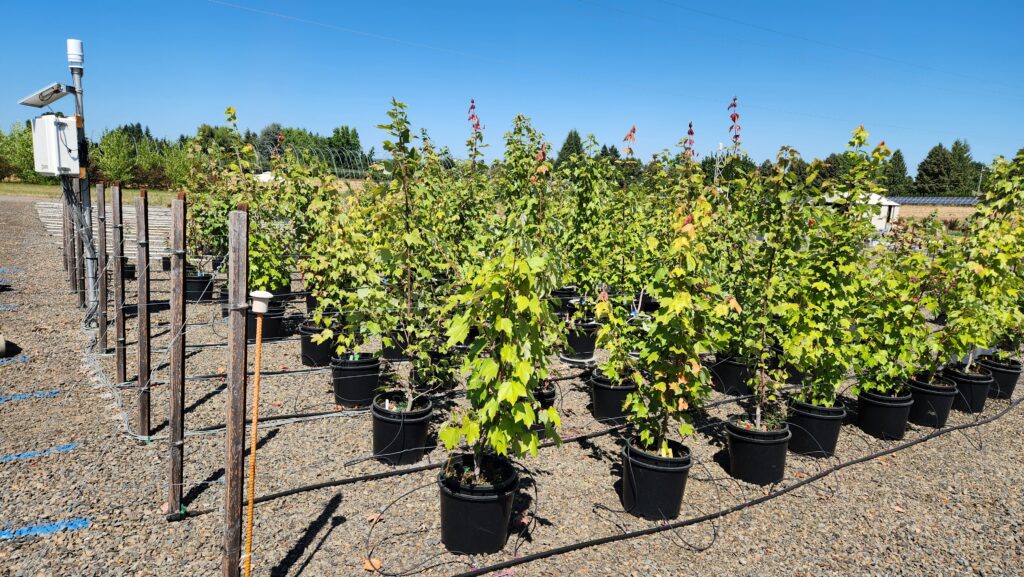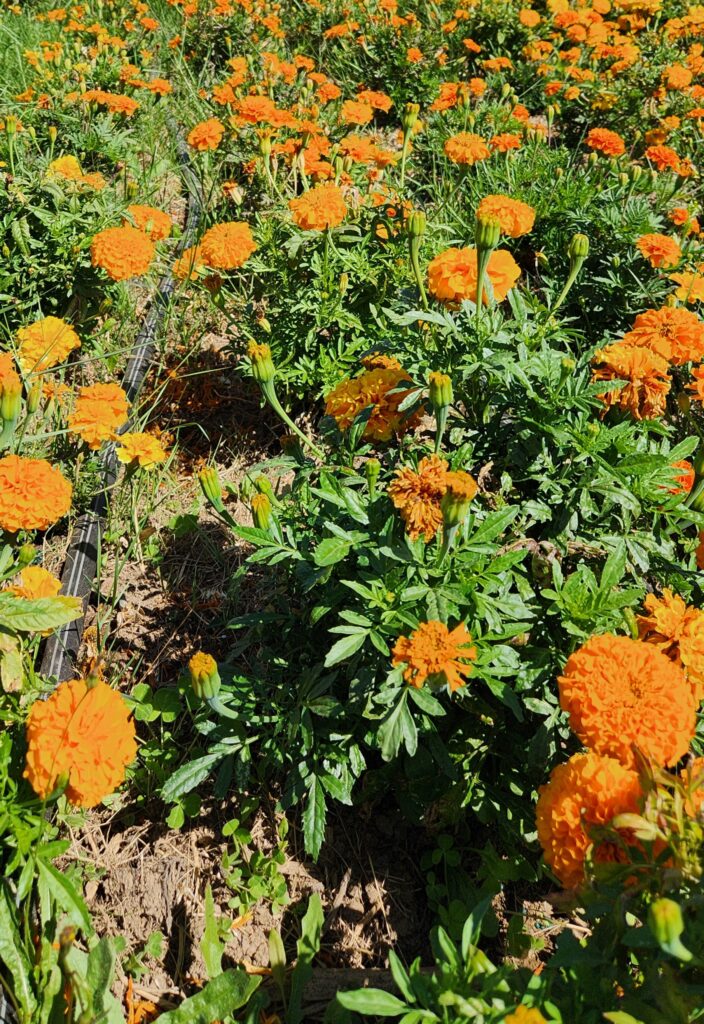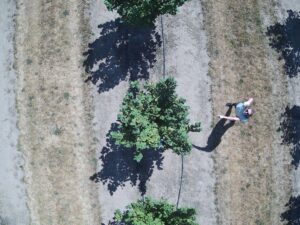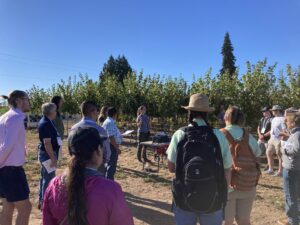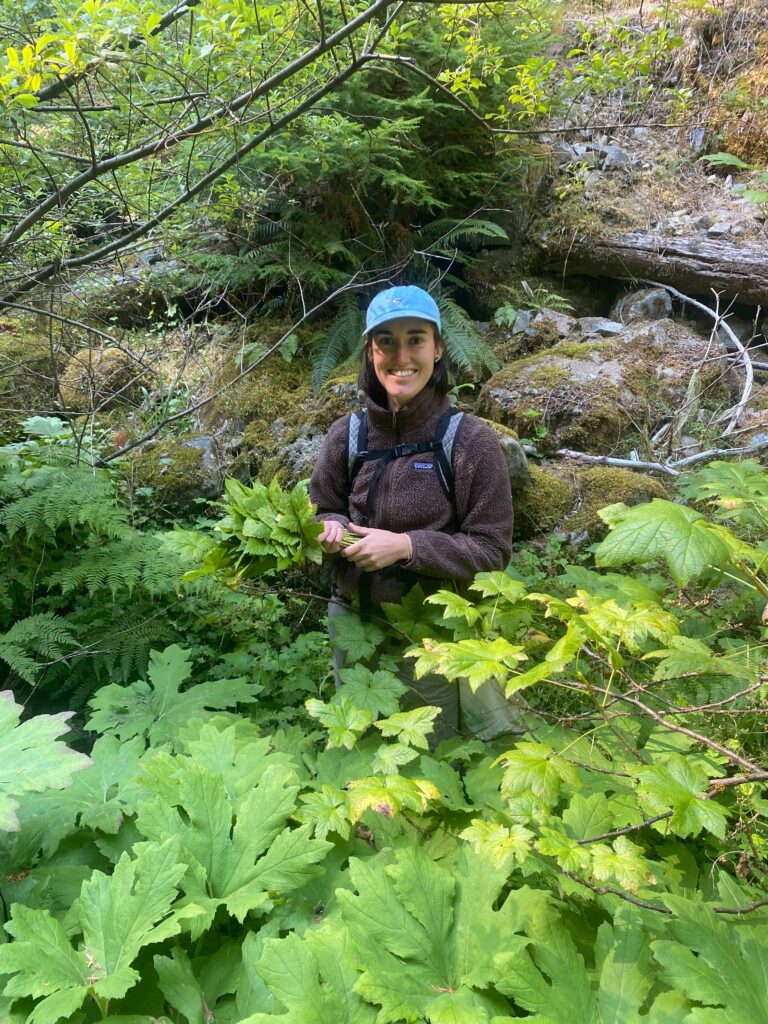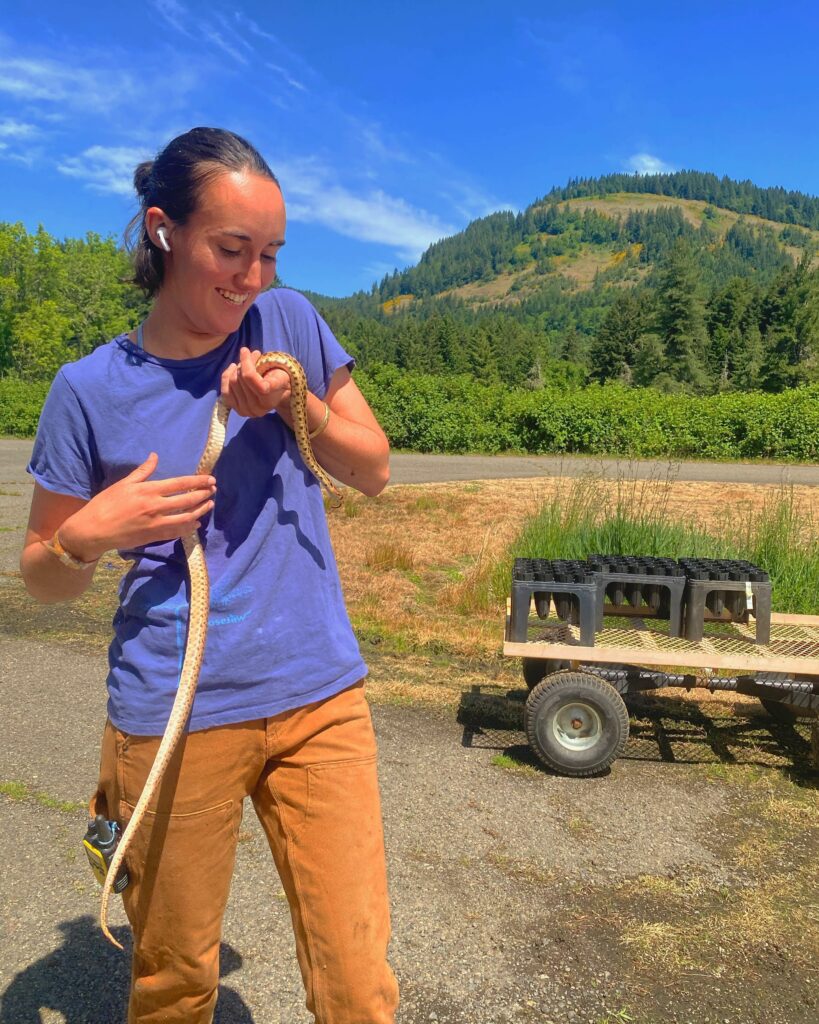Exploring Stratified Substrates and Soil Hydraulics in Agricultural Science
Nursery science researchers have embarked on a journey to harness the principles of soil hydraulics to reshape container production practices. In the past couple of years, Dr. Chris Criscione and Dr. Jeb Fields and others released a series of articles that showed that stratifying pine bark can serve as a substitute for peat-based media in floriculture and bark-based woody plant production. Through layering premium floriculture media over cost-effective pine bark within containers, they reduced reliance on peat. In their study focused on Petunia hybrid ‘Supertunia Honey’, the stratified substrates yielded crops of comparable size and quality, along with enhanced root productivity. Their work also showed superior performance of bark:coir substrates in a stratified setup, even when subjected to reduced irrigation when producing Loropetalum chinense ‘Ruby’ liners. Positive microbial communities in stratified systems further aided in mitigating water stress. Furthermore, Red Drift® rose plants grown in stratified substrates exhibited equal or superior crop growth despite receiving less controlled-release fertilizer. This suggests potential for reducing fertilizer and irrigation rates while upholding crop
quality, offering a sustainable avenue for containerized crops. This blog post aims to shed light on stratified substrates and also provide insights into ongoing projects at the Nackley Lab that are delving into this innovative frontier of nursery science.

Soil hydraulics delves into the intricate world of water movement within soils—how water traverses the soil matrix, its distribution, and its intricate interactions with soil particles and structure. It’s a field dedicated to understanding the physics governing water’s journey through soils, and this knowledge carries significance for agriculture, environmental science, hydrology, and civil engineering. Soil hydraulics guides irrigation strategies, shapes drainage designs, and fuels sustainable land management practices.

Central to soil hydraulics is the concept of matric potential, a critical factor in irrigation management and plant-available water. Matric potential captures the degree to which soil particles retain water due to molecular attractions—it’s essentially the “stickiness” of water to soil particles. When soil isn’t completely saturated, minuscule air-filled spaces exist between particles. Water molecules adhere to these particles, creating capillary forces that coax water upwards. The strength of the bond between water and soil particles determines the matric potential, effectively influencing water availability to plants.

Two other essential players in the realm of soil hydraulics are soil texture and structure. Envision soil as an intricate mosaic, with particles coming together to form aggregates, shaping distinct pathways and chambers. This arrangement, referred to as soil structure, creates macropores—
akin to express highways—through which water can flow rapidly. At the same time, micropores, reminiscent of narrow alleyways, gently retain water against gravity’s pull, acting as reservoirs
for plant roots during dry spells. Additionally, soil structure influences permeability, determining how efficiently water infiltrates and the risk of surface runoff.
Soil texture, on the other hand, hinges on the proportions of sand, silt, and clay particles in the soil. Each particle type comes with distinct traits that shape water dynamics. Coarser-textured soils with more sand have ample space between particles, allowing water to move quickly with
less retention. Finer-textured soils, rich in silt and clay, boast smaller gaps between particles, leading to slower water movement and higher water-holding capacity.
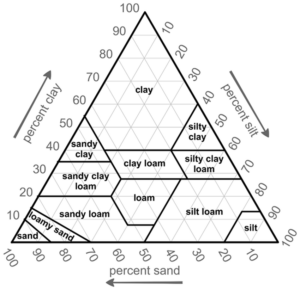
However, when soil is confined to pots or containers, it undergoes transformations in its natural structure due to various container-related factors. The restricted space of a pot, contrasting with the expanse of natural soil, can lead to the erosion of soil structure. Aggregates—clusters of particles forming pores and pathways—can deteriorate over time due to limited expansion room. This confined space often results in compaction, where soil particles compress closely, reducing essential air-filled pores needed for root growth and water movement. The watering practices specific to potted plants can contribute further by compacting soil particles as water occupies gaps. The absence of natural soil organisms and plant roots within containers hampers the
maintenance of soil structure. Repeated disturbances, like transplanting or repotting, can exacerbate these structural changes. To counter these effects, selecting appropriate potting mixes that retain structure, incorporating organic matter for improved aeration and water retention, and being mindful of compaction during planting and watering are recommended.

Traditionally, the nursery field has focused on creating homogeneous potting mixes that maintain structure while offering suitable hydraulic properties. Classic blends often comprise bark, coir, peat, perlite, vermiculite, and pumice. However, a recent shift in focus has led scientists to explore how layering media can simulate natural soil hydraulics—an approach known as stratified substrates.


Stratified substrates involve arranging potting media of varying textures in layers within a single container. This structured layering entails placing coarser-textured substrates at the bottom and finer-textured ones on top, mimicking natural soil layers. This technique aims to influence water
movement, nutrient distribution, and hydraulic behavior within the confined environment of a container. By borrowing from the stratification seen in the ground, stratified substrates strive to
optimize resource efficiency, plant growth, and root development in controlled settings like potted plants.
Some may draw parallels between stratified substrates and the practice of placing rocks or gravel at the bottom of larger plant pots. While both concepts involve layering materials, there are distinctions. The practice of adding gravel or rocks to enhance drainage in larger pots shares a
kinship with stratified substrates. However, it doesn’t replicate the comprehensive layering dynamics seen in stratified substrates. Adding gravel mainly addresses drainage concerns without fully incorporating the layered hydraulic principles inherent to stratified substrates.

Dr. Chris Criscione, in collaboration with the Dr. Jeb Fields group at Louisiana State University, has been at the forefront of investigating stratified substrates in containerized plant growth. Their research delves into how layering different potting media textures can enhance water retention, nutrient availability, and overall plant performance. The studies highlight promising outcomes, such as heightened root productivity, improved growth, and enhanced quality under stratified
conditions compared to conventional substrates. This technique holds potential for bolstering sustainable crop cultivation within controlled environments.

Nevertheless, it’s crucial to acknowledge that findings from studies conducted in one geographic region—such as the Southeastern USA—may not seamlessly extrapolate to other areas with distinct climates and environmental conditions, like the Pacific Northwest. Climate, temperature, humidity, and other factors can significantly influence plant growth and water dynamics. Given this variation, research in regions like the Pacific Northwest, such as Oregon, is crucial. The
unique environmental factors there, including cooler temperatures and higher rainfall, can impact water movement, nutrient availability, and plant response to stratified substrates. Bark-based substrates, common in some areas, may behave differently in terms of water retention and
drainage in regions with distinct soil compositions. To address this, the Nackley Lab initiated a collaboration with Dr. Fields and others in 2022, planning to explore the impacts and benefits of stratifying substrates in Nursery production. The first stratified substrate experiment was
launched in 2023 at Oregon State University North Willamette Research and Extension Center (NWREC), aiming to reduce resource demand and provide insights into the effectiveness of stratified substrates in that context, contributing to more informed decision-making for nursery production and horticulture practices in the region.
More Information:
Single-screen Bark Particle Separation Can be Used to Engineer Stratified Substrate Systems
Stratified Substrates Can Reduce Peat Use and Improve Root Productivity in Container Crop Production



